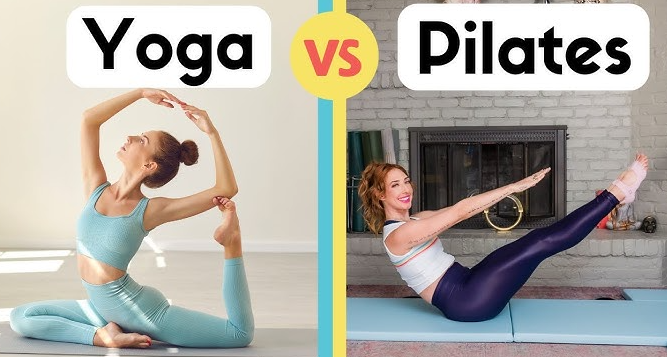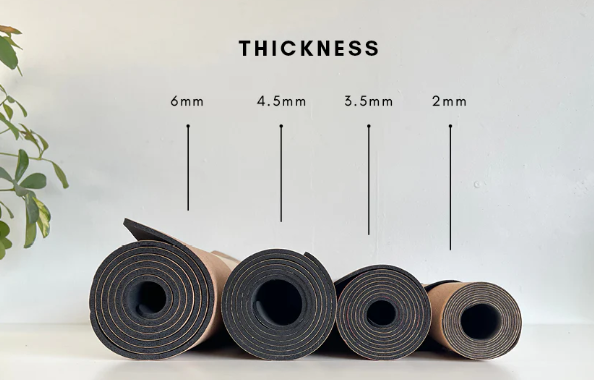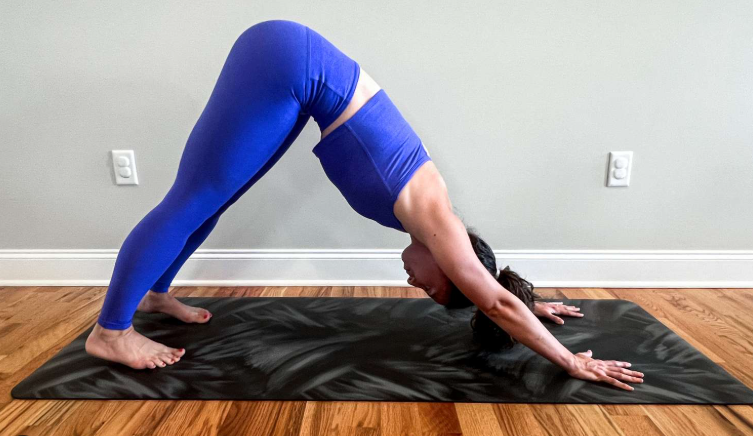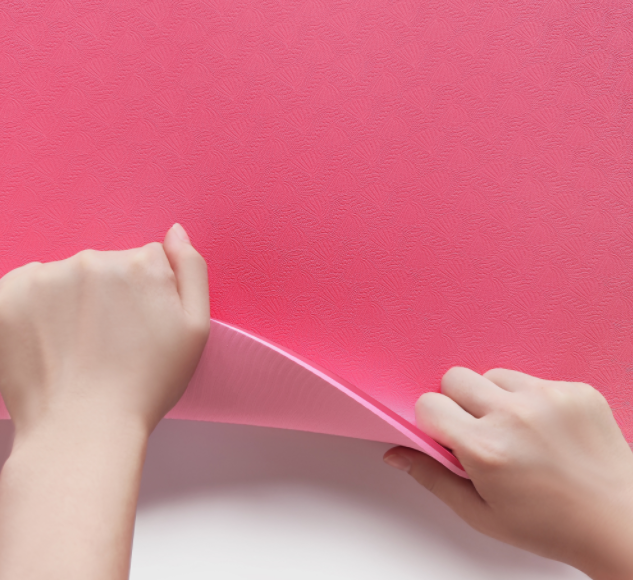I’ve been to many yoga studios and Pilates classes. Each time, I notice people rolling out their custom mats with confidence. These mats are more than colorful accessories. They create a safe foundation for your practice.
Yoga and Pilates both need good cushioning. Your body needs support during floor exercises. The mat sits between you and the hard ground. It stops you from slipping during poses. It gives you the grip you need for stability. Without a good mat, you might get hurt. You’ll feel uncomfortable. Your performance will drop.
This article clears up the confusion. I’ll explain the key differences between yoga mats and Pilates mats. I’ll use clear, practical terms.
You’ll learn:
-
Thickness variations and why they matter for each practice
-
Material differences that affect grip, durability, and care
-
Size options based on your height and practice style
-
Price-to-value ratios to help you spend smart
By the end, you’ll know which mat fits your needs. Are you a dedicated yogi? A Pilates fan? Or someone trying both? You’ll make a smart choice. No more guessing. No more wasting money on wrong equipment. Just the right mat for your fitness path.
Quick recommendation chart:
|
Feature |
Yoga Mat |
Pilates Mat |
|---|---|---|
|
Thickness |
3–6 mm |
8–15 mm |
|
Grip |
Strong, textured |
Smooth, moderate |
|
Focus |
Stability & balance |
Cushioning & support |
|
Portability |
Lightweight |
Bulkier |
|
Best For |
Standing poses, balance work |
Floor exercises, core training |
Overview: Yoga vs. Pilates
Before you pick a mat, understand what makes these two practices different. Yoga and Pilates aren’t the same thing. They have different goals. They require different movements. These differences affect the mat you should buy.

What Yoga Practice Demands From Your Mat
Yoga is an ancient practice. It started in India thousands of years ago. Today, it focuses on balance, flexibility, and holding poses. You stay in positions for several breaths. Sometimes you hold them for minutes.
Here’s what happens during a typical yoga session:
-
Static poses: You hold tree pose, warrior pose, or downward dog
-
Balance work: You stand on one leg or balance on your hands
-
Grounding connection: Your feet, hands, or body parts press into the mat
-
Movement between poses: You transition with control and focus
Your mat needs to keep you stable. In warrior pose, your feet can’t slip. In plank, your hands must grip the surface. I recommend a mat with strong ground contact and great grip.
The practice happens standing or in upright positions. You spend less time lying on your back or side. This means you don’t need as much cushioning for your spine.
What Pilates Practice Demands From Your Mat
Pilates came later. Joseph Pilates created it in the 20th century. The focus is different. Pilates builds core strength through controlled movements.
A Pilates session looks like this:
-
Dynamic exercises: You roll through your spine
-
Mat-based floor work: About 80% of exercises happen lying down
-
Repetitive movements: You repeat The Hundred, Roll-Ups, and Leg Circles multiple times
-
Spinal articulation: Your back, hips, and tailbone press into the mat
Your spine hits the mat over and over. Your hip bones make contact during side work. Your tailbone presses down during pelvic curls. Without proper cushioning, these pressure points hurt. They distract you from the exercise.
I suggest thick padding and shock absorption for Pilates. You don’t need as much grip. Your body stays closer to the floor. Stability comes from your core, not from sticking to the mat.
Material and Thickness
The mat beneath you determines how your body feels during practice. I’ve tested dozens of mats over the years. Material and thickness form the base of your experience. Get these wrong, and every session becomes a struggle.
Standard Thickness Specifications
Yoga mats measure 3–6 mm thick. This thin profile keeps you stable. When you stand in tree pose, you feel the ground beneath you. Your feet connect to the floor. This connection helps your balance.

I use a 4 mm yoga mat for my practice. It gives just enough cushioning for my knees during low lunge. But it keeps me grounded during standing sequences.
Pilates mats are thicker—8–15 mm is the standard range. This extra padding protects your spine. During roll-ups, your vertebrae press into the mat. A thick surface absorbs this pressure. Your tailbone doesn’t bruise. Your hip bones stay comfortable during side-lying work.
I recommend 10 mm thickness for most Pilates students. This measurement offers the sweet spot. You get cushioning. You don’t feel cut off from your movements.
Material Types and Their Properties
Mat material controls grip, durability, and maintenance needs. Four main materials dominate the market.
PVC (Polyvinyl Chloride)
This synthetic material appears in most budget yoga mats. It costs less than other options.
Key features:
– Sticky surface that grips well for yoga poses
– Durable construction that lasts years with regular use
– Easy to clean with simple soap and water
– Not eco-friendly—takes decades to break down
Price range: $15–$40 for standard sizes
I’ve owned PVC mats that lasted five years. They work well for beginners. The grip stays strong even after hundreds of sessions.
TPE (Thermoplastic Elastomer)
This material bridges performance and environmental concern.
Key features:
– Moderate grip suitable for both yoga and light Pilates
– Recyclable material that breaks down faster than PVC
– Lightweight design makes carrying easier
– Less durable than PVC or rubber options
Price range: $25–$60
TPE mats feel softer than PVC. The texture is gentler on your skin. I recommend these for people who practice both yoga and Pilates from time to time.
NBR (Nitrile Butadiene Rubber)
This synthetic rubber appears in most thick Pilates mats.
Key features:
– Excellent cushioning that protects joints and spine
– Water-resistant surface repels sweat
– Thick padding at 10–15 mm
– Heavier weight makes transport hard
Price range: $30–$70
NBR creates the best Pilates experience. The material absorbs impact well. Your spine stays comfortable during the entire class. I use an NBR yoga mat for my Pilates sessions. The 12 mm thickness removes all pressure point pain.
Natural Rubber
Premium yoga mats use natural rubber from tree sap.
Key features:
– Superior grip even when wet with sweat
– Eco-friendly material from renewable sources
– Long-lasting quality withstands intense use
– Heavier than synthetic options
– Latex allergies prevent some people from using it
Price range: $60–$120
Natural rubber provides the best yoga grip I’ve experienced. My hands never slip during downward dog. The mat stays planted during jump-throughs. These mats cost more upfront. But they last longer than cheaper alternatives.
Texture and Grip
The surface texture of your mat controls how your body interacts with it. I’ve tested mats with different textures for years. Grip patterns and surface finishes create different experiences. Your practice type determines which texture works best.

Yoga Mat Texture: Built for Maximum Traction
Yoga mats feature a sticky, textured surface designed to prevent slipping. The texture creates friction between your skin and the mat. This friction keeps you stable during poses.
Common yoga mat surface patterns:
-
Raised dot texture – Small bumps across the surface increase contact points
-
Wave patterns – Curved grooves channel sweat away from your hands
-
Cross-hatch design – Grid patterns grip in multiple directions
-
Smooth sticky finish – Tacky material without visible texture
I use a natural rubber mat with raised dots. During downward dog, my hands grip well. Even when sweat builds up, my palms don’t slide. The texture digs into my skin just enough to create hold.
Pilates Mat Texture: Designed for Smooth Movement
Pilates mats have a smoother, softer surface with minimal texture. The finish feels gentle against your skin. This smoothness serves a specific purpose.
Pilates mat surface characteristics:
-
Flat, even finish without raised patterns
-
Soft-touch material that cushions contact points
-
Low-friction design that allows sliding movements
-
Dense foam texture that compresses under pressure
Why Pilates needs less grip and more glide:
Pilates movements happen close to the mat surface. You roll through your spine vertebra by vertebra. You slide your legs during extensions. You shift your pelvis during bridges. These movements need smooth transitions.
The smooth surface lets your body move with ease. You maintain control through core engagement, not surface friction. I’ve tried using my sticky yoga mat for Pilates. The texture grabbed my shirt during roll-ups. My spine couldn’t glide well. The experience felt choppy and uncomfortable.
Size and Portability
The size of your mat affects how much space you have for movements. Portability determines how easy it is to carry your mat to class. These factors matter more than most beginners realize.

Standard Yoga Mat Dimensions
Yoga mats measure 68–72 inches long and 24 inches wide. This standard size fits most people’s height and shoulder width. The compact size works well for yoga movements.
I use a 68-inch mat during my practice. I’m 5’7″ tall. My head and feet stay on the mat when I lie down in savasana. Standing poses keep my feet within the mat edges.
Width considerations for yoga:
– 24 inches handles most standing poses
– Warrior sequences fit without stepping off
– Side planks stay within mat boundaries
– Narrow width keeps your practice contained
Taller practitioners need longer options. If you’re over 6 feet, look for 72-inch or 74-inch lengths. I’ve watched tall students use standard mats. Their heads hang off during floor work. Their feet extend past the edge in standing poses.
Standard Pilates Mat Dimensions
Pilates mats measure 72–80 inches long and 24–26 inches wide. The extra length fits full-body floor exercises. Many Pilates mats stretch to 80 inches or more.
I own a 78-inch Pilates mat. The extra length helps during specific exercises:
– Roll-ups need extra space above your head
– Leg extensions require room beyond your feet
– Arm reaches during The Hundred use the full length
– Spine stretches benefit from the longer surface
Why Pilates demands larger dimensions:
Your body travels more distance in Pilates. During rolling exercises, you move up and down the mat. Your head starts at one end. Your feet reach the other end. A short mat cuts off your movement range.
I tried using my 68-inch yoga mat for Pilates once. During roll-overs, my feet hung off the edge. I couldn’t complete the full movement. The shorter range made the exercise less effective.
Portability Differences Between Mat Types
Rolling up and transporting your mat happens before and after every session. The portability gap between yoga and Pilates mats becomes obvious here.
Yoga mats roll tight:
Thin yoga mats (3–6 mm) create tight rolls. My 4 mm yoga mat rolls into a 5-inch diameter cylinder. The compact size fits in most gym bags. I strap it to my backpack with simple elastic bands.
I walk to my yoga studio. The 15-minute walk with my rolled mat feels easy. The 2.5-pound weight disappears on my shoulder. I don’t notice I’m carrying it.
Pilates mats roll larger:
Thick Pilates mats (10–15 mm) create bulky rolls. My 12 mm Pilates mat rolls into an 8-inch diameter cylinder. The thick material doesn’t compress much. The roll feels substantial in my arms.
Carrying challenges with Pilates mats:
– Standard yoga bags don’t fit the diameter
– Weight becomes noticeable during transport
– Bulky size makes public transit awkward
– Cars or lockers need more storage space
I drive to Pilates classes. Carrying my 6-pound mat from the parking lot works fine. But I wouldn’t want to walk far with it. I’ve seen students struggle on subway trains. The large roll bumps into other passengers. It doesn’t fit in overhead racks well.
Price and Durability
Your mat is an investment in your practice. I’ve purchased dozens of mats over the years. Price doesn’t always match quality. Knowing the cost versus lifespan helps you spend smart.
Typical Price Ranges: Yoga vs. Pilates Mats
Yoga mat pricing tiers:
Budget yoga mats cost $15–$30. These entry-level options use basic PVC or foam materials. They work fine for beginners exploring yoga for the first time.
I started with a $22 PVC mat from a big-box store. It served me well during my first six months. The grip held up through two classes per week. But the material started breaking down after 50 sessions.
Mid-range yoga mats run $40–$70. This tier offers better materials like premium PVC, TPE, or natural rubber blends. The construction quality jumps up here.
My current practice mat cost $52. It’s a TPE yoga mat with textured grip. I’ve used it for two years without visible wear. The price-to-performance ratio is perfect for regular practitioners.
Premium yoga mats range $80–$120. These high-end options feature natural rubber, organic materials, or advanced grip technology. Hot yoga specialists and those who practice every day benefit most from this tier.
I own a $95 natural rubber mat for hot vinyasa classes. The moisture-activated grip performs better than any cheaper mat I’ve tested. After three years of heavy use (4–5 sessions per week), it still grips like new.
Pilates mat pricing tiers:
Budget Pilates mats cost $30–$45. These basic options provide 8–10 mm thickness. They use foam or low-density NBR material.
I tested a $35 foam Pilates mat when I started. It cushioned okay at first. But after three months, the foam compressed flat in high-contact areas. My tailbone started aching during roll-ups.
Mid-range Pilates mats run $50–$80. This range delivers quality NBR construction at 10–12 mm thickness. The density stays firm enough to support your body weight without bottoming out.
My home Pilates mat cost $58. It’s a 12 mm NBR mat with smooth texture. I’ve used it 4–5 times per week for two years. The cushioning hasn’t compressed much. The surface shows minimal wear.
Premium Pilates mats range $85–$120. These top-tier options include extra-thick padding (15 mm). They also feature advanced materials or special features like alignment guides and carrying systems.
I tried an $110 premium Pilates mat at my studio. The 15 mm thickness felt luxurious during spine work. But the performance difference from my $58 mat wasn’t worth the extra $52 to me. Your mileage may vary if you have specific joint issues.
Price comparison across mat types:
Here’s what I found at the same quality levels:
-
Budget tier: Pilates mats cost $10–$15 more than yoga mats
-
Mid-range: Pilates mats cost $5–$15 more than yoga mats
-
Premium tier: Prices converge at $80–$120 for both types
The price gap reflects material costs. Thicker NBR padding costs more than thin PVC or rubber. You pay for the extra cushioning Pilates demands.
Durability Differences Based on Material and Use Frequency

Yoga mat lifespan by material:
PVC yoga mats last 1–3 years with regular use:
-
Budget PVC ($15–$30): 1–2 years at 2–3 sessions per week
-
Premium PVC ($40–$60): 2–3 years at 3–4 sessions per week
-
Wear shows up as: Smooth spots where hands/feet contact, surface tears, lost tackiness
My first $22 PVC mat lasted 14 months with two sessions per week. The grip zones under my palms wore smooth first. By month 12, my hands started slipping during downward dog.
TPE yoga mats last 2–4 years with regular use:
-
Mid-range TPE ($40–$60): 2–3 years at 3–4 sessions per week
-
Premium TPE ($60–$80): 3–4 years at 4–5 sessions per week
-
Wear shows up as: Edge fraying, color fading, slight compression in high-contact zones
I’ve owned my TPE mat for 2.5 years now. It shows minor edge fraying. But the grip surface maintains full performance. I expect another 1–2 years of use.
Natural rubber yoga mats last 4–6+ years with regular use:
-
Premium rubber ($80–$100): 4–5 years at 4–5 sessions per week
-
Ultra-premium rubber ($100–$120): 5–6+ years at one session every day
-
Wear shows up as: Texture flattening over time, color darkening, surface patina development
My $95 natural rubber mat is three years old. I practice on it 4–5 times per week. The texture has flattened a bit in hand zones. But grip performance remains excellent. I think I have 2–3 more years before I need to replace it.
Pilates mat lifespan by material:
Foam Pilates mats last 1–2 years with regular use:
-
Budget foam ($30–$40): 1 year at 2–3 sessions per week
-
Mid-range foam ($40–$50): 1.5–2 years at 2–3 sessions per week
-
Wear shows up as: Permanent compression, surface tears, loss of cushioning
My $35 foam mat compressed flat within four months of 3x per week use. The spine contact area lost 50% of its cushioning. I donated it and upgraded to NBR.
NBR Pilates mats last 3–6 years with regular use:
-
Mid-range NBR ($50–$70): 3–4 years at 3–4 sessions per week
-
Premium NBR ($70–$100): 4–6 years at 4–5 sessions per week
-
Wear shows up as: Minor surface scuffing, edge wear, gradual density loss
Conclusion
Looking back at my journey through countless mats, I’ve learned this: the right mat isn’t about spending more—it’s about matching the tool to your practice. I wasted money on wrong choices before I understood these differences. Now my yoga mat keeps me grounded through every vinyasa flow. My Pilates mat protects my spine through hundreds of roll-ups. Each serves its purpose perfectly. Your body deserves that same support. Choose wisely, practice often, and let your mat become the foundation that helps you grow stronger with every session.

